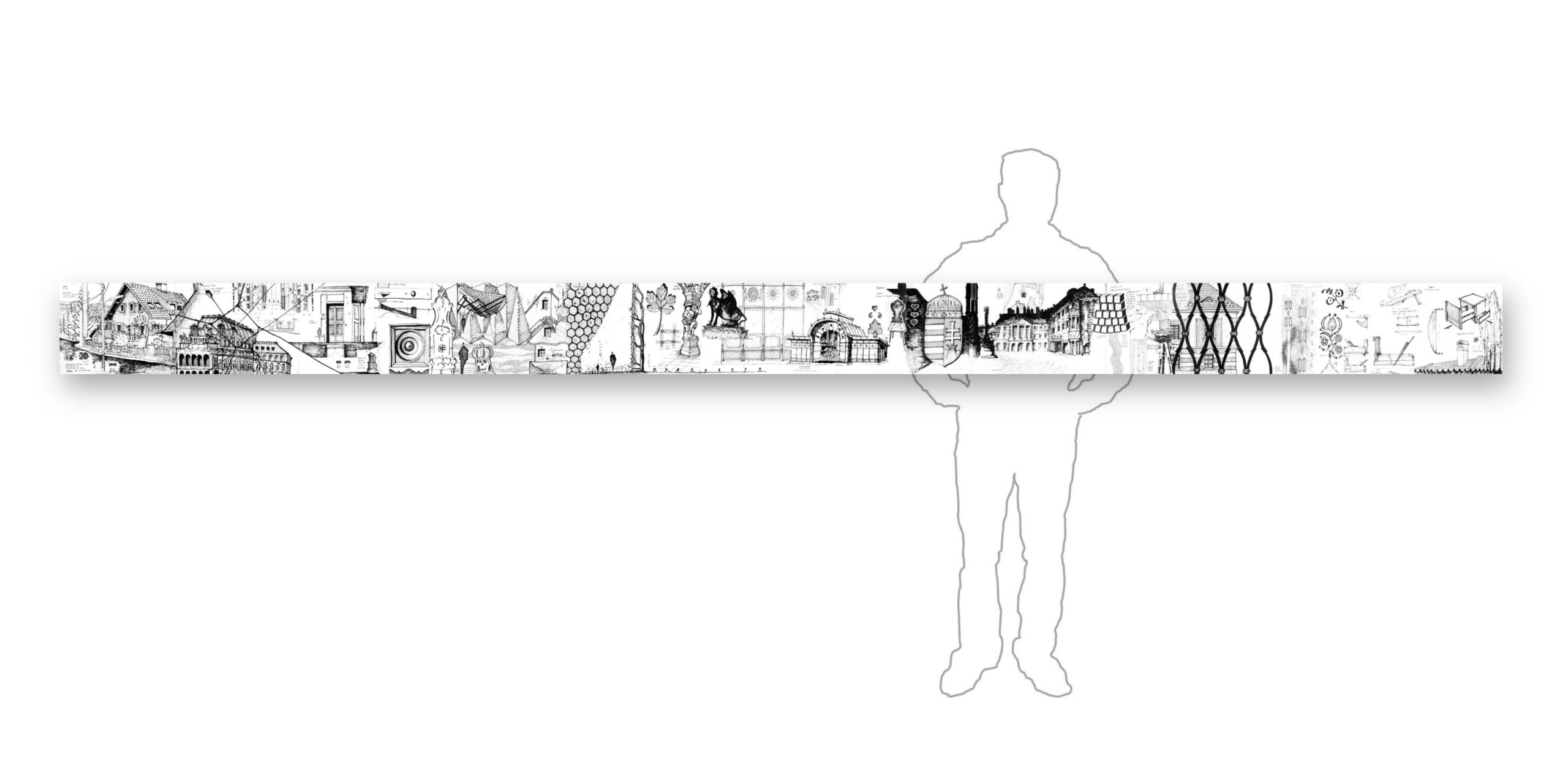6.26.Hungary-3-detail-h Highlights Relevant to Sustainable Design:
Rethink life on the river.
At the top of this drawing, in the upper left, I drew a fish net with a circular set of rings and a small boat. The net design works for carrying the fish, which you’ve caught from the mighty Danube River, fresh and alive on a long day trip. Just below, there is a diagram of a boat that doubles as a mill. The Danube moves through Hungary, and this boat design takes advantage of the movement by weighing anchor and setting up a mill to grind grain, using a similar system as if there were a combination waterfall and steamboat. The innovative nets and boats literally sustain life in simple ways that I had not previously imagined. The river is the source of food with its fish and the source of power with its current. These low-tech solutions are cost-effective and emissions-free.
Decorative textile patterns and stencils straddle the page. Often they are used to decorate not only fabric and furniture but also the sides of buildings. The transformation and metamorphosis of the tulip shape is apparent all over the country. The regionalism within the country is also surprising. The patterns and colors often look quite similar, but I met one old villager who claimed to be able to identify dozens of different folk dress patterns by town. The level of regionalism in fashion, food, furniture, and architecture is surprising considering the country is no larger than the state of Maryland. When I was there in the early 1990s, other than in Budapest, regionalism prevailed over franchising. The twenty-first century may bring untold change that will reduce the charm of regionalism.
Since I do not speak Hungarian, I found that drawing was a key catalyst to capture information. In the evenings, I was able to show people the drawings and learn from the ones who could speak a little bit of English. The Hungarian language is very difficult to learn, because it is rooted in Sanskrit, unlike the romance languages, French, Spanish, and Italian that are rooted in Latin. You may have an easier time learning how to communicate in Japanese than in Hungarian.
Author and illustrator: Charlie Szoradi is an architect, inventor, and the CEO of Independence LED Lighting. He writes about many other topics related to regionalism through his extensive travels around the world.
If you have found this posting online, it is an excerpt from Mr. Szoradi’s book Learn from Looking that served as the inspiring seed content for this drawing share resource. For additional drawings and insights on, regionalism relative to innovation and cultural heritage we hope that you enjoy exploring LearnfromLooking.com. You can search via general terms such as sustainability as well as narrower terms such as river life, decorative textiles, and regionalism.



